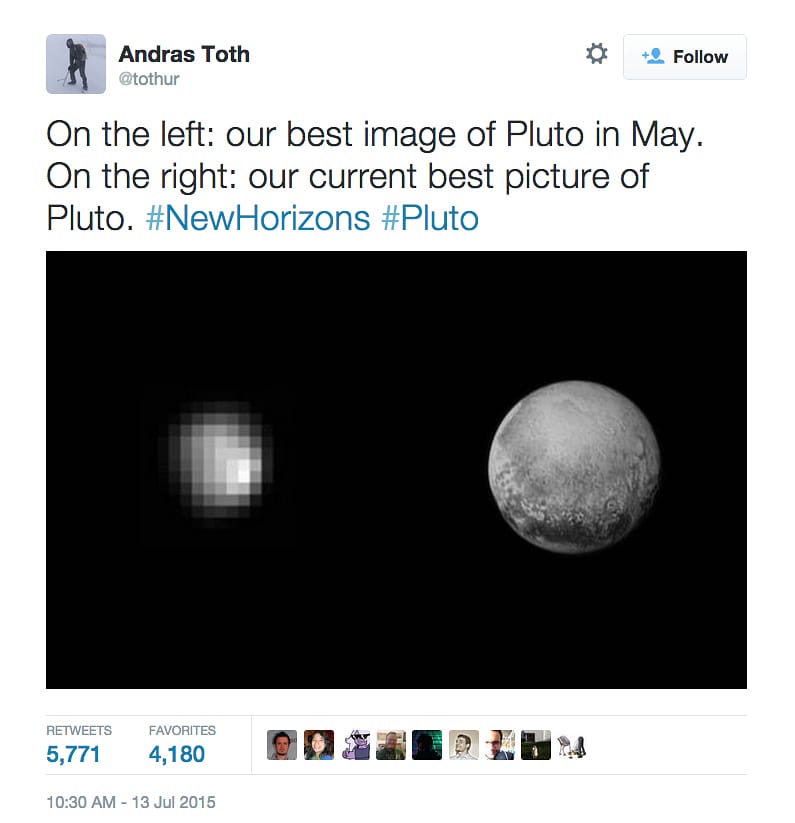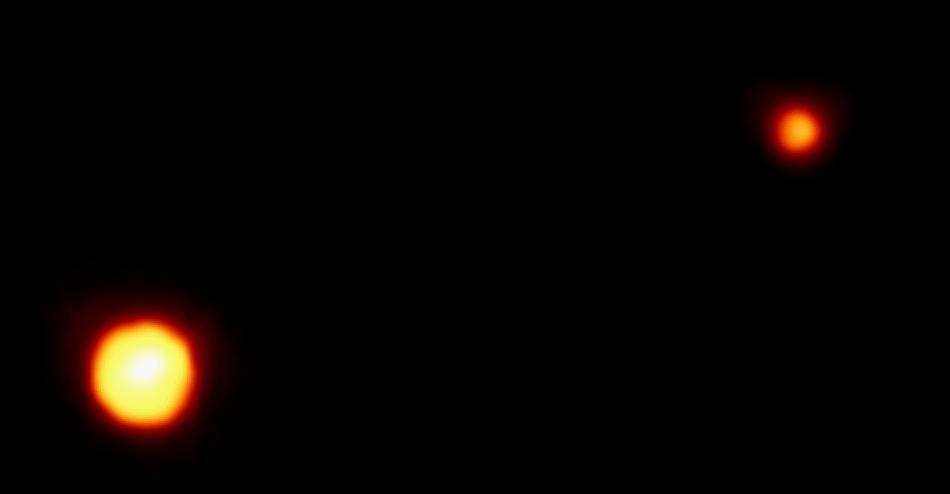As Pluto Comes into Sharp Focus, NASA Embarks on a New Unknown
Early yesterday morning Pluto, three billion miles from Earth, appeared in our sharpest view yet.

Early yesterday morning Pluto, three billion miles from Earth, appeared in our sharpest view yet. And this image taken 476,000 miles from the dwarf planet is only the beginning of the images from NASA’s New Horizons spacecraft, which has journeyed a decade to yesterday’s flyby and will be sending back its 10 years of information over the next 16 months.

NASA, in an unprecedented move, released the photograph at 7am Eastern Time on Instagram, according to Wired a whole hour before its debut on NASA.gov. While it’s unusual to offer a private social media organization such a chance for a major public event, NASA is going full throttle on social media, with scientists on a Reddit AMA and taking questions on Facebook, and regular updates on Twitter with #PlutoFlyby. It’s even playfully highlighted the 1,000-mile-wide land expanse shaped like a heart revealed on Pluto’s surface.
The enthusiasm is deserved, as it’s hard to overstate just how incredible it is that the spacecraft made it all the way to Pluto without major collisions, that only decades after a 24-year-old Kansan named Clyde W. Tombaugh discovered the dwarf planet in 1930 we are seeing it in a resolution that far exceeds previous views from the Hubble Space Telescope (compared below). Some of the ashes of the late Tombaugh are flying aboard New Horizons in a small canister.


There’s something somber in a lot of the coverage of New Horizons, such as the New York Times framing it as the “end of an era.” It’s true that we as a public are perhaps not as engaged with space travel as 50 years ago. Take, for example, the newly renovated Great Hall at the New York Hall of Science which opened in 1964 celebrating space exploration and now has an exhibition on Earth ecology. And there’s Pluto’s downgrading from a planet in 2006 with the discovery of similarly large entities. However, as Lee Billings wrote at Scientific American, this is as much a beginning of a new unknown as an end:
After Pluto, New Horizons’ mission will not be over. Its trajectory will take it deep into the unexplored frontier of the Kuiper belt, a sprawling realm sparsely populated with millions of icy leftovers left in deep freeze ever since our solar system’s infancy.
Last night New Horizons “phoned home” that it was safe and healthy after its flyby, and you can track its continued movements on NASA’s dedicated site. New images are expected to be released today, when the beautiful color portrait shown at the top of this post will likely be outdone by even closer views.





